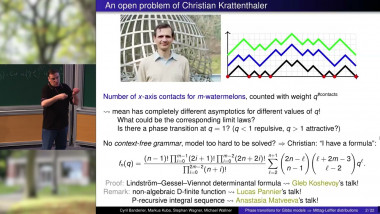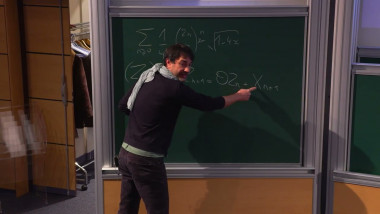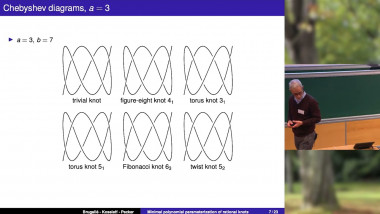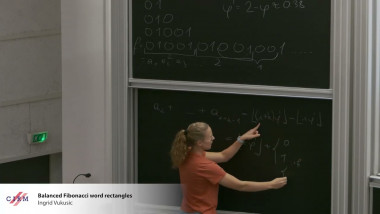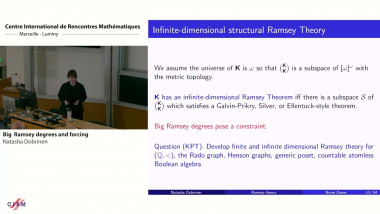Appears in collection : Combinatorial geometries: matroids, oriented matroids and applications / Géométries combinatoires : matroïdes, matroïdes orientés et applications
The classical Tverberg's theorem says that a set with sufficiently many points in $R^d$ can always be partitioned into m parts so that the (m - 1)-simplex is the (nerve) intersection pattern of the convex hulls of the parts. Our main results demonstrate that Tverberg's theorem is but a special case of a much more general situation. Given sufficiently many points, any tree or cycle, can also be induced by at least one partition of the point set. The proofs require a deep investigation of oriented matroids and order types.
(Joint work with Deborah Oliveros, Tommy Hogan, Dominic Yang (supported by NSF).)
